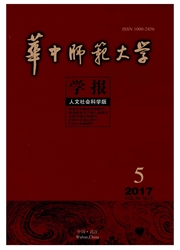

 中文摘要:
中文摘要:
真知,是任何意义理论的核心问题,追求真知也是人的意识活动的最根本动力。但是"真知"的显现是否真为真知,在什么意义上为真知,如何取得真知,最终能否取得最后的真知,却是意义理论中最困难的问题,也是各种意义理论的最大分歧点。皮尔斯的符号现象学理论之所以值得进一步研究,是因为他提出了一个可以清楚把握却又层次复杂的、不同于实用主义的真知观。首先,意义活动是追求真知的;第二,每个符号再现,不可能全真,也不可能全假;第三:正确的意义追求,需要符号活动延续,成为一个社群的一致意见,就出现了"社群真知";第四:因为社群没有边界,符号文本的无限衍义,就能逐渐迫近理想中的真知。
 英文摘要:
英文摘要:
Truth is the core issue of any theory of meaning,and the pursuit of truth is the fundamental motivation of human consciousness.But whether the appearance of truth is true,and in what sense,is the most difficult problem and the diverging point of various schools.The reason why Peirce's semiotic phenomenology deserves deeper studies is because he proposes a doctrine on truth that could be grasped,but also multilayered and not very pragmatic.First,any meaning activity pursues truth.Secondly,no semiotic representation can be totally untrue nor completely true.Thirdly,in order to access truth,there must be an accumulation of semiotic activities until the consensus of a community is reached,which could be called a "communitarian truth".Fourthly,since communities are continuously formed,the unlimited semiosis thus resulted could gradually approach the ideal truth.
 同期刊论文项目
同期刊论文项目
 同项目期刊论文
同项目期刊论文
 期刊信息
期刊信息
